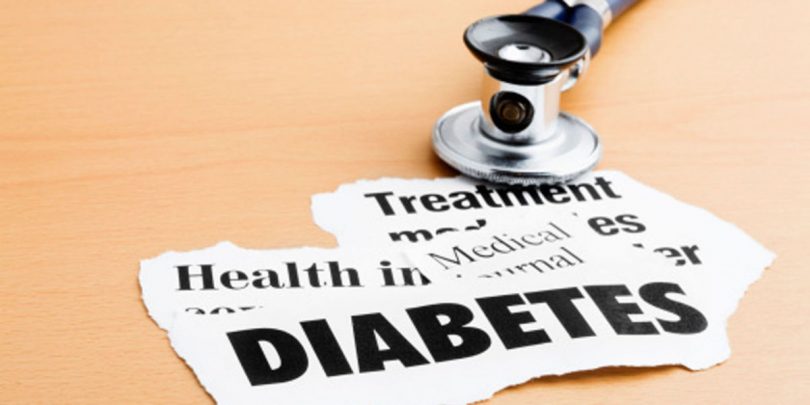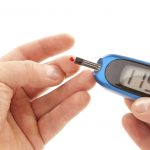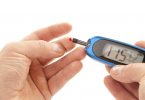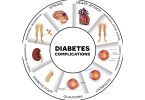How are they similar? How are they different?
Whether type 1 or type 2, diabetes is a serious condition. It is on the rise in North America, and changing patterns, with type 2 diabetes being more frequently diagnosed in children and in some cases, type 1 diabetes is being diagnosed in adults.
Only 5 percent of diabetics have type 1, while 95 percent have type 2 diabetes.
Continue reading as we compare these two conditions and show how they similar in many ways, but very different too. Continue reading to find out more about these disorders and how to get a better handle on diabetes management and treatment.
The Similarities
Regardless of the type of diabetes that you suffer from, one thing is consistent, the body is not able to use insulin as it should. In type 1, type 2 and gestational diabetes you body cannot get the energy that it needs, and if it is left untreated, your body will suffer greatly.
Diabetes can affect anyone, regardless of their age or weight. Although being older or overweight can increase your risk of diabetes, some overweight people will never develop diabetes just as some thin people will. In addition, gestational diabetes does not discriminate.
Insulin Problems
Insulin is a hormone that is vital to metabolism. It’s produced in the pancreas, where it is absorbed into your blood and distributed throughout the body to help cells absorb glucose. From there the glucose is converted into energy and/or stored in your fat and liver cells for future use.
In some diabetics the problem is with the pancreas, in that it is unable to produce insulin. In other diabetics the problem is that the body is unable to use the insulin that is released by the pancreas – this is referred to as insulin resistance.
When glucose accumulates in the bloodstream and it cannot be absorbed by the cells in your body it becomes and can cause irreversible damage to your tissues and organs.
Complications
When blood glucose accumulates, and reaches toxic levels, it can begin to affect the organs, especially the kidneys, heart and eyes. If diabetes is uncontrolled it can cause kidney failure, blindness, poor blood circulation and heart disease.
If diabetes is uncontrolled for a long time and circulation is compromised, blood will not be able to reach your extremities, especially your feet and toes. Lack of blood supply causes nerve damage and starves the tissues of oxygen and vital nutrients. After some time, wounds can go unnoticed, healing can take a very long time and infection can set in. Once the cells begin to die, amputation is a very real possibility. This not an uncommon scenario when diabetes is poorly managed for a very long time.
The Differences
There are some key differences between type 1 and type 2 diabetes. These are particularly evident when you look at their onset, how they develop and the complications that can happen with each type.
Onset
Type 1 diabetes is classically referred to as juvenile diabetes, the reason being that the symptooms typically showed up in these individuals during childhood. In the US the average age of diagnosis for type 1 diabetes is 14 years old, although the condition can happen any time before the age of 40. Type 1 is a genetic condition and not the result of lifestyle choices, although some experts suspect that the condition may be influenced by environmental factors.
Type 2 diabetes may have some genetic factors, but lifestyle choices have a much larger role in the onset of this disease. Most cases of type 2 diabetes are diagnosed in adulthood, as metabolic processes become affected by years of poor habits.
Manifestation
Type 1 diabetes is caused when the body’s immune system attacks the cells of the pancreas that make insulin. When insulin production stops, the body can no longer process glucose, which causes hyperglycemia.
Type 2 diabetes is caused by insulin resistance. In the early stages of type 2, there is enough insulin in the body, but cells fail to use it efficiently. As the body’s resistance to insulin increases, more and more insulin is required to get the glucose into the cells. Eventually the body fails to keep up with the demand and glucose accumulates in the blood stream.
Symptoms
Type 1 diabetes symptoms happen suddenly. The most common early, and sudden symptom, is extreme thirst and increased urination as your body is trying desperately to excrete the excess glucose. Other early symptoms include digestive distress, weakness, irritability, abdominal pain. In addition, weight loss, rapid heart rate and low body temperature may also be observed.
Type 2 diabetes symptoms happen gradually, as your cells become more and more resistant to insulin. Many of the symptoms are the same type 1 symptoms, such as, fatigue, thirst, hunger and weight loss. In addition to these symptoms, type 2 diabetics may experience more infections and find that healing is slow. Blurry vision is also common as a result of the body pulling fluids from the eyes in an effort to maintain hydration.
Complications
Nerve damage, kidney damage, eye damage, blood vessel diseases and foot damage are all potential complications regardless of the type of diabetes if it is not properly managed. People with diabetes are also twice as likely to develop heart disease as those without.
High blood sugar (hyperglycaemia) is a worry in both types of diabetics, but low blood sugar (hypoglycaemia) is more common in type 1 diabetics. Hypoglycaemia only occurs in type 2 diabetics when insulin to other medications are taken to manage the disease.
Diabetes Management
In diabetes management, having a healthy lifestyle is necessary regardless of the type. This means following a healthy low GI diet and participating in regular exercise to help keep blood sugar in control. Though, extra measures are necessary for type 1 diabetics.
In type 1 diabetes, the pancreas does not produce insulin, so it’s important to check your blood sugar frequently and inject yourself with the proper amount of insulin daily.
In advanced cases of type 2 diabetes, insulin injections may also by required, however this condition is often managed with lifestyle changes and oral medication.
Final Thoughts
While there is no known way to prevent the onset of type 1 diabetes, there is plenty that can be done to avoid becoming affected with type 2 diabetes. Recent studies have shown that a moderate weight loss and an increase in movement can help to dramatically reduce symptoms and improve insulin response, in some individuals the condition can be completely reversed.
Having a good mindset is key. Know that, although diabetes is a serious disease, you have the power to control the effects it has on your body and to improve the quality of your life!
More from Things Health
-
A List of The Best Vitamins and Supplements for People with Diabetes
Did you know that supplementing can help manage symptoms of diabetes? We all know that a well-balanced low GI diet, regular movement and Insulin and…
-
Visual Signs of Poor Health That You Probably Ignore (But Shouldn't)
We often think that being diagnosed with an illness such as diabetes, heart disease, stroke or cancer as something that happens out of the blue.…
-
Essential Tips For Managing Diabetes
Diabetes can attack anyone, from toddlers to grown-ups. By definition, this is a disease which affects the ability of your body to produce or use…
-
8 Busted Myths About Diabetes
Everyone has heard of diabetes, but many people don’t know much about the condition. There are a lot of myths circulating about diabetes, which can…
-
A List of The Best Vitamins and Supplements for People with Diabetes
Did you know that supplementing can help manage symptoms of diabetes? We all know that a well-balanced low GI diet, regular movement and Insulin and…

















